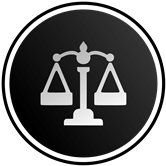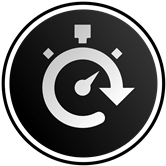Updated on November 01, 2025 05:33:18 PM
The Debt Recovery Tribunal is a special forum that tackles and resolves debt-related disputes. Unlike traditional civil courts, the DRT primarily focuses on resolving debts for banks and financial institutions. DRT (Debt Recovery Tribunal) was established to handle matters where the debt exceeds a certain threshold. It provides a simplified procedure to ensure swift justice. Filing a case with the Debt Recovery Tribunal (DRT) requires a legal procedure and necessary documentation, and it can be a complex task without proper legal guidance.
At Litem Legalis, we have expertise in assisting clients through each legal consensus, from filing the case to enforcing the tribunal judgment. Whether you are a creditor or debtor having a basic understanding of the DRT and its work system is crucial. In this article, we will discuss the DRT, jurisdiction, case procedure, orders, and the role of legal representatives.
DRT stands for Debt Recovery Tribunal and handles cases related to debt recovery for banks and financial institutions. This tribunal was created under the “Recovery of Debt Due to Banks and Financial Institutions Act of 1993” and is headed by the presiding officer. Its primary purpose is to provide a specific forum for the recovery of debts and adjudication.
The Debt Recovery Tribunal looks at the matter where the principal amount is more than ₹20 lakhs. The tribunal has the power to summon witnesses, conduct witness inquiries, demand document production, and issue debt recovery orders. Distinct from the traditional court proceeding, the DRT offers a quick settlement because it only concentrates on debt recovery.
At current, there are a total of 39 DRTs and 5 DRATs in the country. The appeal against DRT can be made to DRAT. The following list enumerates which DRAT is to be approached against the judgment of respective DRTS.
| DRAT Chennai | DRAT Kolkata | DRAT Mumbai | DRAT Delhi | DRAT Allahabad |
|---|---|---|---|---|
|
|
|
|
|
The jurisdiction of the Debt Recovery Tribunal (DRT) encompasses the following:
The complete case procedure in the Debt Recovery Tribunal is as follows:
Analysing and gathering information is the vital step for filing a complaint against Trademark Infringement. It serves as a backbone of the case that proves the applicant’s side. To build a strong case, the applicant must collect information that clearly proves the violation or Infringement.
The Financial institutions or banks file an application in DRT if the debt principal amounts to more than 20 lakh. The necessary documents like evidence, loan agreements or defaulter must be attached with the application. Additionally, the application includes information about the debt amount, the default conditions, and the particular remedy requested.Once the application is filed, the DRT examines it to ensure that all the documentation and requirements are complete or not. If all things are in order or meet the requirements, the tribunal sends a notice to the respondent to notify them about the case.
When the respondent is notified of the case, it is required to appear before the tribunal and respond to the application. Here, the respondent has to submit a written statement in defence, addressing the claims made in the application once he/she receives the notice within 30 days.
A preliminary hearing was conducted to resolve the case. During this hearing, the DRT examines the documents, scrutinises the key issues and sets a timeline for further proceedings. Here, both the parties present their proofs or evidence and the tribunal ensures that all relevant facts and arguments are brought forward.
The legal representatives from both parties present their arguments to the tribunal with reference to the evidence and relevant laws. At this stage, the tribunal may ask questions and request clarifications in order to ensure a thorough understanding of the case. This phase is crucial for summarising both sides' positions and addressing any ambiguities. The tribunal conducts a final hearing and issues its binding decision, determining the resolution of the debt recovery dispute after considering these arguments and clarifications.
A legally enforceable order is issued by the DRT; it may contain instructions on asset attachment or debt payback. The creditor may start enforcement procedures if the debtor doesn't cooperate. Within a given timeframe, aggrieved parties have the option to appeal the decision to the Debt Recovery Appellate Tribunal (DRAT).
The DRT (Debt Recovery Tribunal) can issue several types of orders such as Recovery certificates, seize orders, sale orders or interim orders to provide temporary relief. For enforcing this order the DRT appoints a Recovery officer whose work executes and oversees the attachment. In case the debtor fails to pay, a warrant can be issued for them.
On the other side, debtors are required to follow the tribunal's instructions, assist in enforcement procedures, and make required payments on time. They also have the right to appeal the DRT's results, request a stay on orders, and anticipate equitable treatment during enforcement.
Seeking professional legal assistance is essential in DRT cases because of its complex legal procedure and the specialised nature of debt recovery laws. A lawyer with experience can navigate the tribunal's processes effectively, ensuring all documents are submitted correctly, deadlines are met, and legal arguments are presented strategically. Whether it's negotiating settlements, challenging claims, or enforcing tribunal orders, they can provide valuable advice.
The Debt Recovery Tribunal (DRT) is a complex legal forum that requires professional and skilled legal counsel. Professional guidance is important to ensure a successful outcome and manage procedural complexities properly. At "Litem Legalis," we're committed to giving our clients full support and specialised plans by using our extensive range of expertise and proven track record in DRT matters. Our team of professionals is dedicated to safeguarding your interests and getting the greatest outcomes, whether you are a creditor looking for effective debt collection or a debtor in need of a strong defence. Contact us today to learn how we can assist you with your DRT case.
At Litem Legalis, we provide comprehensive assistance for clients involved in DRT matters. From filing applications to defending against claims, our expert team will guide you. We offer specific strategies developed to meet the particular needs of each client while guaranteeing that they are fully aware of their rights and responsibilities. Because of our team's extensive knowledge of debt recovery regulations, we can successfully and efficiently manage even the most complex cases.

Legal Consultation

Expert Lawyers

Lowest Fees

Quick Process
No, DRT is not a traditional court. It is a special tribunal that is established under “The Recovery of Debts and Bankruptcy Act, 1993” for handling matters related to debt.
If the principal amount is more than ₹20 lakh, any bank and financial institution can file the case under the DRT.
Yes, a borrower can also approach DRT if the debt is more than 20 lakhs. If the case involves banks and institutions as opposite parties on debts greater than 20 lakhs, they can come under the DRT (Debt Recovery Tribunal).
Yes, the DRT is able to issue orders granting stays. If the DRT considers it necessary, it may grant a stay to stop certain actions throughout the proceedings.
Disclaimer: The content provided on this site is intended for informational purposes only. Accessing or utilizing this site and its materials does not establish an attorney-client relationship. The information contained herein does not constitute legal or professional advice and should not be relied upon as such. It is not a substitute for obtaining legal counsel from a qualified attorney licensed in your jurisdiction.